The Symbolism Behind Christmas Colors: Red, Green, Gold
It’s that magical time of year when everything feels festive. Lights twinkle everywhere, beautiful ornaments decorate homes, Christmas trees...
Errika Gerakiti 16 December 2024
Angels have been a source of artistic inspiration throughout history. Whether adorned with wings and halos or not, the varied appearances of angels in art exemplify a unifying idea: there is no one fixed image of an angel. Here’s a look at a select few.
We begin with perhaps a more unconventional take on angels. When you think of an angel, you might picture an impassive figurehead, existing in religious texts only to impart the word of God. However, some angels certainly have character!

Niccolò di Ser Sozzo, Angel, c. 1350. The Hyde Collection, Glens Falls, NY, USA. Detail.
This piece, colloquially dubbed the ‘Angel with Attitude’, may have been originally intended to portray an expression of reverence. However, to our modern-day eyes, they do look rather bored!
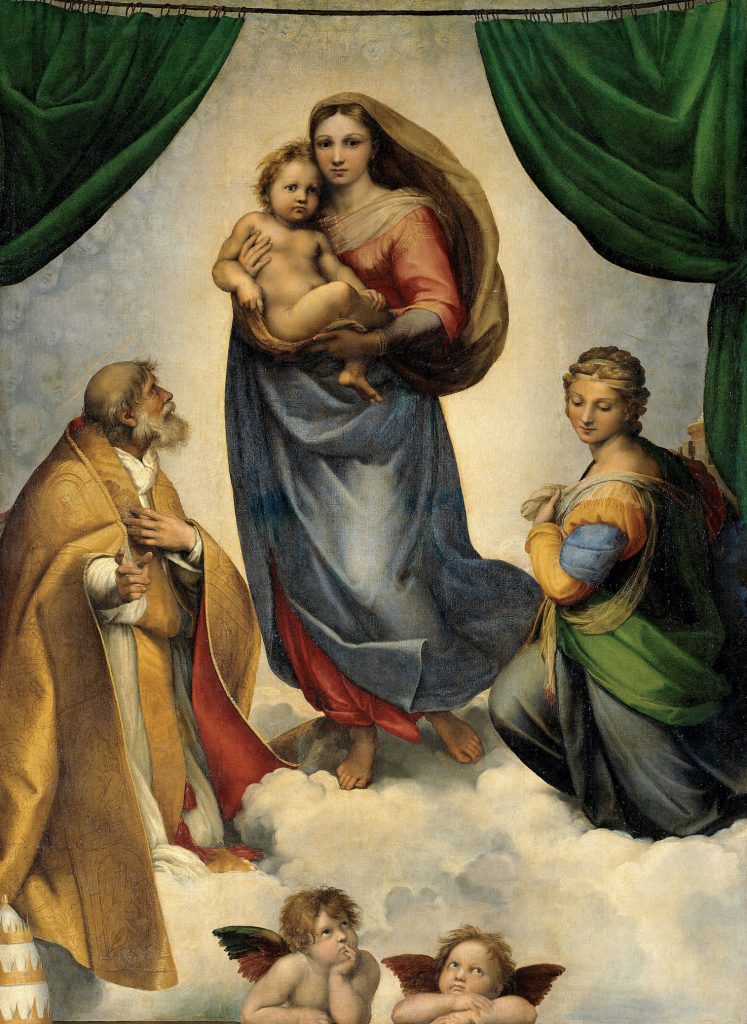
Raphael, The Sistine Madonna, 1512, Gemaldegalerie Alte Meister, Dresden, Germany.
Or how about this image of two cherubs? They’re placed at the bottom of The Sistine Madonna by Raphael. They may be serenely watching the scene above them, but they also look suspiciously close to rolling their eyes!
Clearly, others feel the same. These cherubs have been parodied many times on postcards or as memes, including the addition of sarcastic thought bubbles, or the pair doing less than angelic activities like smoking.
After the holidays, maybe you can use them to show just how bored you are in a work meeting?
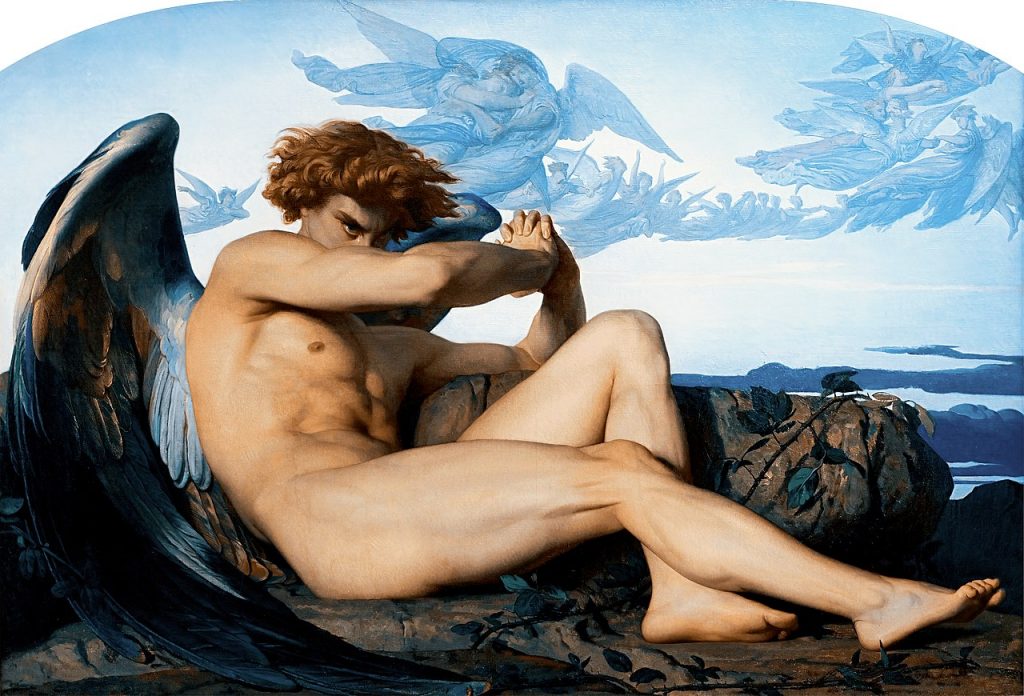
Alexandre Cabanel, Fallen Angel, ca. 1847, Musée Fabre, Montpellier, France.
Now a more somber thought. The above is possibly one of the most famous portrayals of an angel—or rather, a fallen angel.
In the full piece, we can see a pair of striking dark wings. It’s as if they have been burned from their typical pristine white during the descent from Heaven to Hell. However, the outstretched, naked body of the angel arguably draws more attention to the figure’s humanity rather than its otherworldly attributes. Furthermore, it’s the close-up of The Fallen Angel that is perhaps even more iconic than the piece in its entirety.
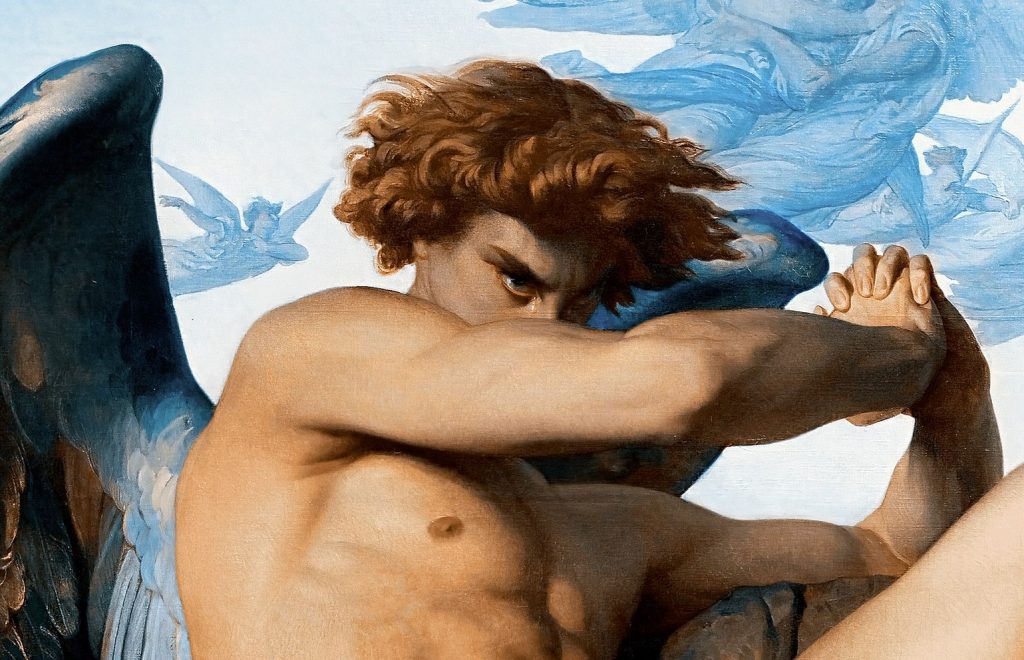
Alexandre Cabanel, Fallen Angel, 1847, Musée Fabre, Montpellier, France. Detail.
The drawn eyebrows, the single tear—each detail creates a very human expression of grief and anger. This depiction of an angel is far from a detached religious figurehead; it’s intense and personal.
For beauty is nothing
but the beginning of terror, which we can still barely endure,
and while we stand in wonder it coolly disdains
to destroy us. Every Angel is terrifying.
‘The First Elegy’ in The Poetry of Rilke: Bilingual Edition by Rainer Maria Rilke, translated and edited by Edward Snow.
On another note, angels have also been portrayed as more unsettling creatures. Take, for example, the Angel of Death.
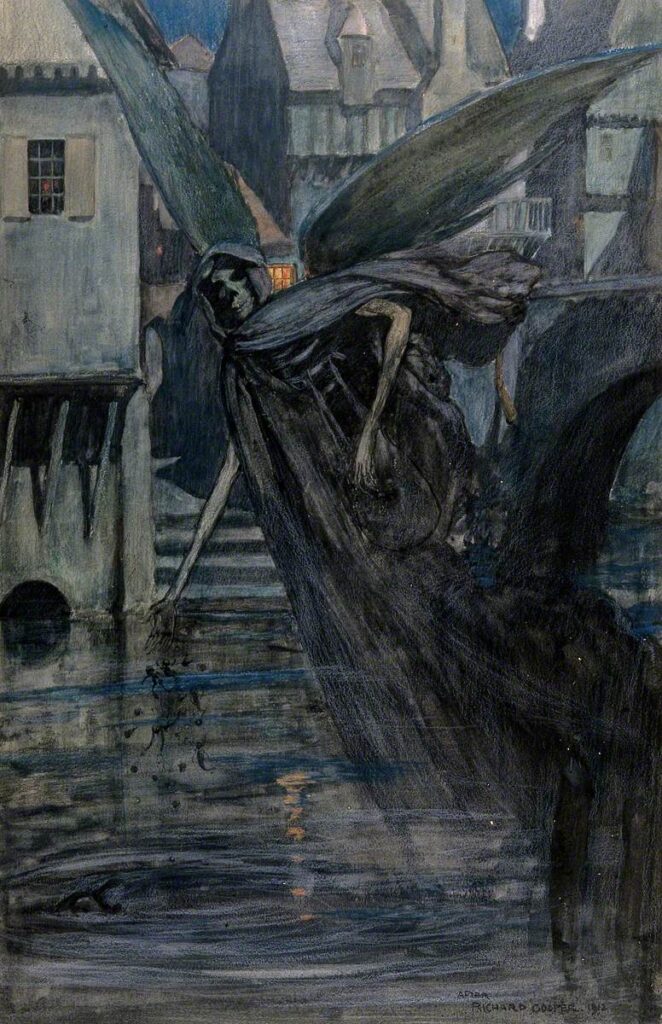
Richard Tennant Cooper, The Angel of Death, a Winged Skeletal Creature, Drops Some Deadly Substances into a River near a Town; Representing Typhoid, 1912, England, Wellcome Collection, London, UK.
Richard Tennant Cooper’s artwork depicts an angel that offers neither comfort nor solace. On the contrary, this angel is a harbinger of doom. With its skull for a face, it spreads the deadly disease of typhoid to a vulnerable town. The stick-like arms and the teeth bared in the skull all contribute further to the eerie atmosphere. It’s almost as if the Angel of Death is taking pleasure in its work…
I have never seen an angel. Show me an angel, and I’ll paint one.
Quoted by Vincent van Gogh in a letter to brother Theo on July 1885, The letters of Vincent van Gogh, ed. Ronal de Leeuw, 1996, p. 302.
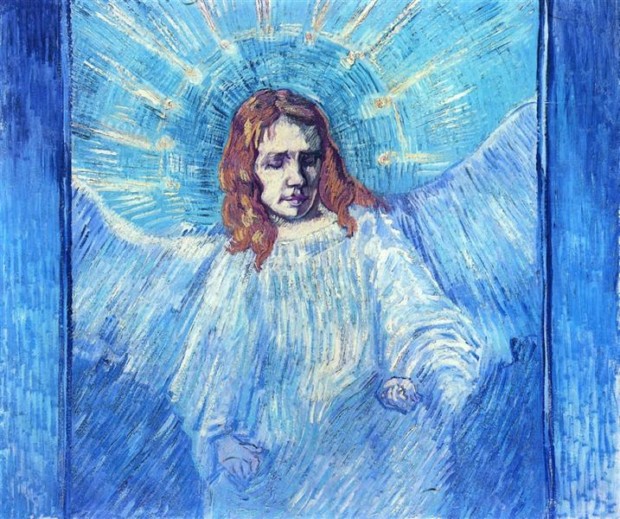
Vincent van Gogh, Head Of An Angel, After Rembrandt, 1889, private collection.
We return to some more typical representations of angels. As the title tells us, Vincent van Gogh’s Head Of An Angel, After Rembrandt was inspired by the work of Rembrandt van Rijn. It was made during a period of Van Gogh’s life where he took to imitating the styles of other artists.
This shows an angel we may be more familiar with: clothed in white robes, watching from the heavens. Interestingly, the red hair offers some added poignancy if we compare it to Cabanel’s Fallen Angel. Could this be Lucifer or Satan as an angel, before the Fall?
As it’s that time of year, let’s end with some angels found in art depicting the nativity.

Antonio da Correggio, The Adoration of the Shepherds, 1529-1530, Gemäldegalerie Alte Meister, Dresden, Germany.
Light is used beautifully in this piece by Correggio, also known as The Holy Night. Our eye is drawn to the glow illuminating the Christ Child and Mary, while angels watch from above. Thankfully they seem less bored than Raphael’s cherubs!
So ends our sampling of angels in art. Many others await you—there’s sure to be an angel to fit anyone’s preferred style.
Veronica Winters: Traveling through art history: 20 brilliant paintings of angels & more. Accessed 19 Dec 2023.
DailyArt Magazine needs your support. Every contribution, however big or small, is very valuable for our future. Thanks to it, we will be able to sustain and grow the Magazine. Thank you for your help!